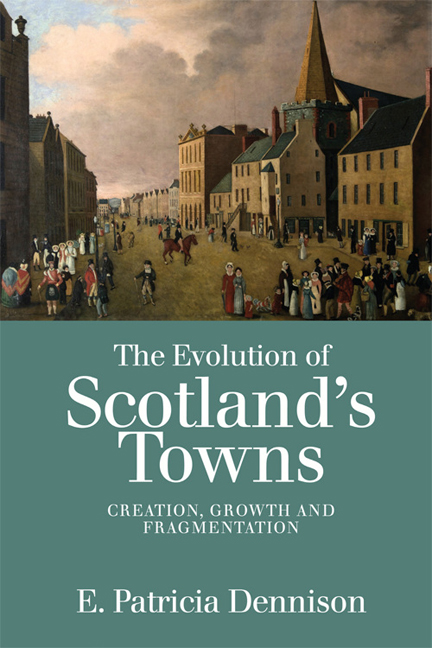Book contents
- Frontmatter
- Contents
- List of Figures
- Acknowledgements
- Image Credits
- List of Abbreviations
- Introduction
- 1 Medieval Towns
- 2 Daily Life in the Middle Ages
- 3 Medieval Faith and the Church
- 4 Encroachment on Burgh Society, 1550–1750
- 5 Man-made and Natural Disasters, 1550–1750
- 6 The Birth of Urban Scotland
- 7 The Victorian Town
- 8 The Twentieth Century
- Post-script: Footprints to Fragmentation
- Appendix: Population Statistics – A Select List
- Bibliography
- Index
7 - The Victorian Town
Published online by Cambridge University Press: 11 November 2020
- Frontmatter
- Contents
- List of Figures
- Acknowledgements
- Image Credits
- List of Abbreviations
- Introduction
- 1 Medieval Towns
- 2 Daily Life in the Middle Ages
- 3 Medieval Faith and the Church
- 4 Encroachment on Burgh Society, 1550–1750
- 5 Man-made and Natural Disasters, 1550–1750
- 6 The Birth of Urban Scotland
- 7 The Victorian Town
- 8 The Twentieth Century
- Post-script: Footprints to Fragmentation
- Appendix: Population Statistics – A Select List
- Bibliography
- Index
Summary
Scotland entered the nineteenth century as an enlightened, newly urban nation but also as one that inherited a multitude of mounting problems. The outstandingly urgent concern was how to cope with the new kind of urban society which industrialisation and a growing population had begun to produce. Legislation of 1833 set a precedent, offering a first step to a wider and more regularised solution – the police burgh. The combination of the Burgh Police Act and the Burgh Reform Acts of the same year provided some of the answers. One of the most significant statutes was that householders who paid a rateable value of £10 in a royal burgh or burgh of barony were authorised to institute a ‘police system’ and appoint ‘commissioners of police’. New powers to regulate town life involved both behaviour and the provision of lighting, water, cleansing and drainage. This was reform of a sort. The direct beneficiaries of these infant police burghs were the newly enfranchised groups in society, but £10 property holders amounted to fewer than one in forty of the adult male population.
By 1847, legislation extended these rights to all parliamentary burghs. Even then, and with a more inclusive Police Act of 1850, which covered settlements with over 1,200 inhabitants, relatively few burghs took advantage of this new status. It was not until a third Act of 1862, which extended to towns or villages with a population of over 700, that the majority of Scottish towns began to develop systematic provision of lighting, pavements and building regulations. Many of the newly emerged industrial towns, such as Barrhead in 1893, or small market centres, like Cumnock in 1866, gained the privileges of burghs. Yet the legislation of 1862 was adoptive only, which meant that towns like Coatbridge could simply ignore it. Where implemented, the 1862 Act provided that commissioners had the right, and even duty, to raise local rates and institute measures to ensure the safety of the town and control vagrants; to pave, light and clean the streets, as well as naming and numbering streets and houses; to improve gas and water supplies; and to raise standards in slaughterhouses and prevent infectious diseases. These were all well-intentioned objectives. But legislation was not always matched by co-operation.
- Type
- Chapter
- Information
- The Evolution of Scotland's TownsCreation, Growth and Fragmentation, pp. 209 - 246Publisher: Edinburgh University PressPrint publication year: 2017



